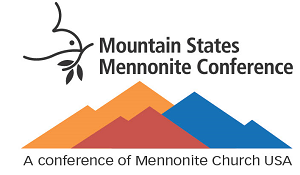By Ivanna Johnson-McMurry, Chair of the SEED Project and active in the First Mennonite Church – Denver, CO
During the Civil Rights Movement, Black churches were bombed ad nauseam, and not because the Ku Klux Klan and other white supremacist organizations hated the church; in fact, the KKK is rooted in Christianity, Protestantism to be exact. They bombed Black churches because they knew the Church was the epicenter of the civil rights movement. It was in disparate churches in individual communities where meetings were managed; protesters organized; activist rallied; respite care was provided; ideas about bus boycotts were formed; sit-ins were shaped and supported; a new way forward was imagined, re-imagined and forged.
The Black church was there to support the movement in whatever capacity it could. Should the NAACP, the Student Nonviolent Coordinating Committee, the Freedom Riders or all three simultaneously needed a place to hold an emergency meeting, the Black church would create space for that to happen. And, if that meant displacing the choir to the bathroom, because of the great acoustics, so be it. When it was all said and done, everyone’s needs were met. Before you left the church to put into practice what you’d gained from a make shift meeting held by the Congress of Racial Equality or the Southern Christian Leadership Conference, the Mother’s of church would hand you a protest sign, a pulled pork sandwich and pray a blessing over you until you met again. They provided more than material support to the movement, they nourished souls. And, it is for these reasons that bigoted troglodytes euphorically bombed Black churches with impunity and with very little, if any, repercussions.
As SEED is in a moment of transition, I have been thinking about the Black church quite a bit. Because of financial constraints, SEED’s budget, which is a line item in the Mountain States Conference budget, has been decreased significantly—by over eighty percent. As such we will have to refocus, reimagine and re-envision how SEED should operate as a ministry. In the past, SEED has functioned primarily as a grant making body for emerging ministries and innovative ideas “bubbling up” in the Conference. Though we will still be able to provide financial grants, albeit at a decreased capacity, we are recognizing that our primary focus will need to shift.
I wonder what SEED would look like if we behaved as those Black churches did during the Civil Rights movement. What if we were providing more than just material support for Cole Chandler as he goes before the Denver City Council and Mayor Hancock to demand they provide a permanent address for and not displace Beloved Community Village? What would it mean to have members of the SEED committee galvanize a group of individuals to stand in solidarity with DPS teachers as they strike for fair wages and adequate compensation? What would it look like if SEED members were to stand with the Wall of Moms or the Wall of Vets during a Black Lives Matter Protest? How much more could Second Chance Center accomplish if it had a group of dedicated individuals, such as the SEED committee advocating on its behalf?
This may be the path forward as SEED is reconfigured, re-envisioned and reimagined. Should our Mennonite churches start being bombed because of the work that SEED is doing, we will then know we are on the right path. The Black church never let their 501(c)3 status get in the way of their moral obligation and the Mennonite church, a church committed to social justice, shouldn’t either.
